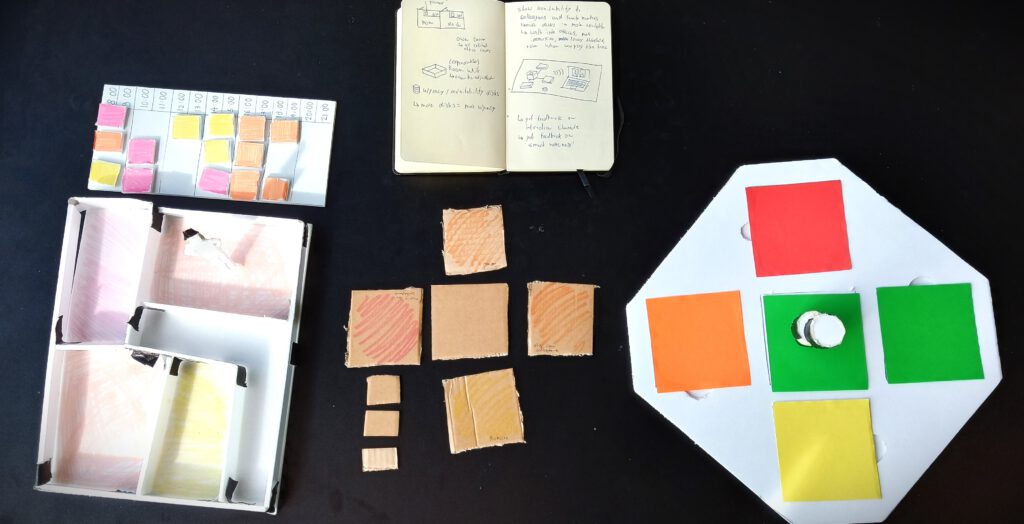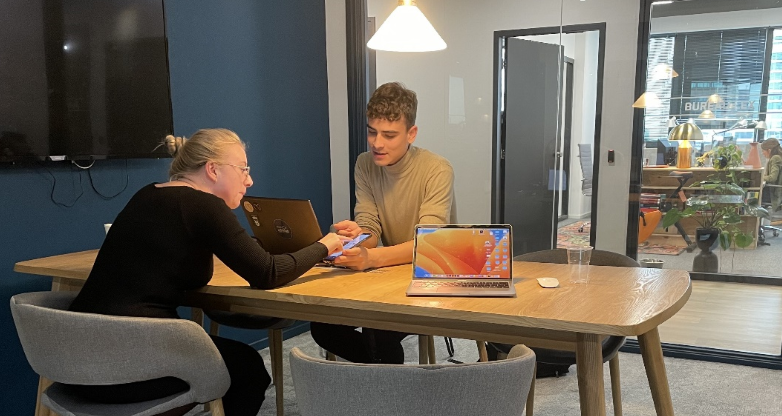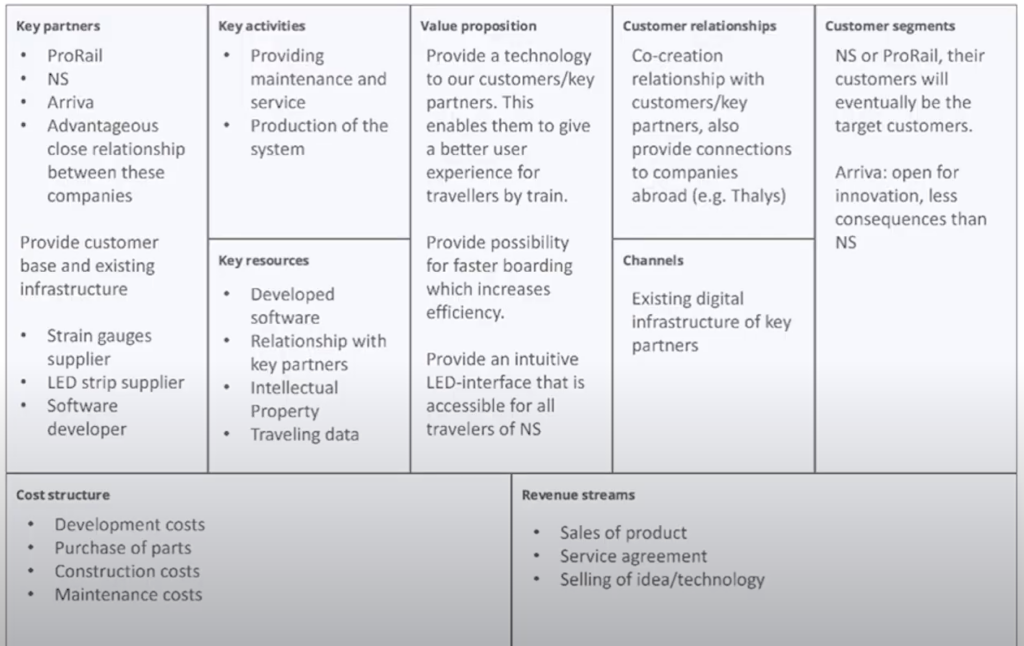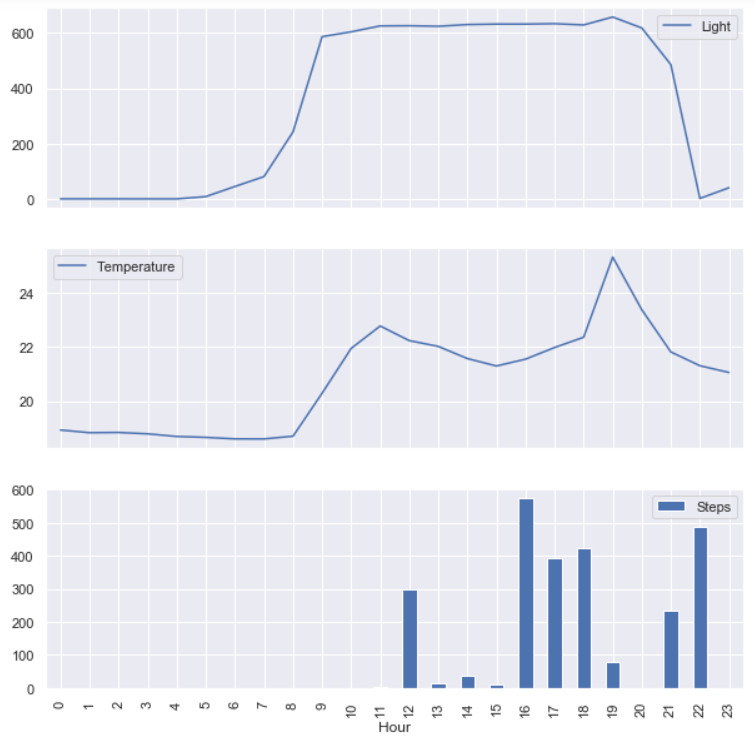
Introduction to Areas of Expertise
An Industrial Designer at TU/e develops themselves multi-dimensionally. The TU/e Department of Industrial Design organized the desired competencies of an ID student into different so-called “Expertise Areas”.
The areas of expertise broadly concern the diverse academic domains (within the arts and humanities, and the social, natural, and formal sciences) that are directly linked to the discipline of industrial design. They include disciplinary knowledge, skills, and attitudes, as well as theories, methods, and techniques that are customary in these fields. Furthermore, they comprise the relations between this field and other disciplines.

My expertise Area development
During my three at the Bachelor of Industrial Design, I have had the possibility to develop skills in all different expertise areas. The variety of courses that were offered and the electives that I chose all contributed to the expertise profile I currently have. My primary learning goal during my Bachelor’s Industrial Design was to become as good as possible at all of these expertise areas. My vision states that Industrial Designers differentiate themselves from engineers because of their great versatility in all kinds of different expertise areas. This versatility is a powerful advantage that will fit the ambitions of my later career.
In the following figure, a visualization of my development across different expertise areas is given. The overall development and competency in each expertise area are elaborated further on this page. Furthermore, the key contributing courses and electives within the respective EAs will be mentioned and briefly explained.
Creativity and Aesthetics
Key courses:
- From Idea to Design
- Project B1
- Project B2.1
- Project B2.2
- Aesthetics of Interaction
- Final Bachelor Project

The expertise area of creativity and aesthetics, which mostly concerns creative thinking processes and ideation, lies at the basis of design projects. Especially in the beginning phase of a design project, when you are still operating in a vaguely defined, ambiguous design space, it is a challenge to take the right steps during your design process to concretize ideas.
In projects in earlier years, I found myself uncomfortable operating in the ambiguous early phase of a design process, in which there is a lack of information about the design space. I usually am the most creative when the end goal is clearly defined. The courses ‘From Idea to Design’ and ‘Project B1’ are examples of this (view projects). After having defined the design goal clearly in the early phase of the project, I especially excelled in further iterating the design towards a polished end product.
In later projects, my ability to get a sense of direction in this aforementioned ambiguous design space has grown. During Project B2.1, B2.2, and Aesthetics of Interaction, I learned to embrace uncertainties to break away from the obvious and allow for out-of-the-box ideation. I noticed that applying multiple different creativity techniques (such as storyboarding, scenarios, HMW affinity diagramming, sketching, and lo-fi prototyping) gave shape to the creative process, and helped to make vague ideas more tangible. Applying these methods in my Final Bachelor Project, especially sketching a lot and making lo-fi prototypes, helped me to concretize my ideas and gave me something graspable to further iterate (see figure).
User and Society
Key courses:
- User-centered Design
- Socio-cultural Design
- Project B2.1
- Design <> Research
- Project B2.2
- Internship National Company
- Final Bachelor Project

Design creates value for people and has a direct impact on everyday life by considering psychology and sociology. Designers empathize with users, involve them in the process, ask pertinent questions, and employ research methods to gather insights and evaluate concepts. They adapt perspectives, embrace diverse mindsets, and understand the social, political, and cultural implications of design to shape and challenge trends within historical and societal contexts.
Throughout my Bachelor, I learned methods to involve the user in the design process and be socio-culturally sensitive. The first, and most fundamental course I followed in this expertise area is ‘User-centered Design’. This course learned me methods to set up interviews, analyze qualitative data, and directly implement it in the design process using several methods, such as affinity diagramming. During the projects that I did in later years, I learned to apply these methods to actual designs, putting the theory into practice.
In my Final Bachelor Project, which was about remote work, I managed to conduct interviews at MedApp: the best hybrid employer in the province of North Brabant in 2021. During these interviews, I found out that my quality lies in communicating directly about the design with end-users. With my ability to explain design concepts in simple terms, using prototypes to support my story, I thrive in co-creation with users. In other projects (such as project B2.1), I noticed that I find it a bit harder to engage in explorative user research because of the lack of concreteness. This can be linked to my profile in creativity and aesthetics: in a phase with a clearly defined design concept, I am good at polishing the details, while I feel more uncomfortable in an explorative phase.
Business and Entrepreneurship
Key courses:
- Design management
- USE Introduction to Technology Entrepreneurship
- USE Organizing Entrepreneurship
- USE Entrepreneurship in Action
- Internship National Company
- Design Innovation Methods
- Final Bachelor Project


Design is about creating meaningful product-service systems that create value for people and the economy. This is the description of the expertise area of Business and Entrepreneurship. It closely connects to my vision of design.
Especially during my second year, I was interested in following more courses within this expertise area. Through the USE package ‘Technology Entrepreneurship’ that I followed, I have learned methods to design strategically, by looking at trends and interests of a segmented user group. Furthermore, I learned that tech entrepreneurship is all about cost-effective product validation, rather than giving priority to developing the tech first: an MVP (minimal viable product) is often sufficient to be able to get validation to ultimately further iterate. Moreover, by making business models one can get a view on value trades within their business, conclusively enabling sustainable growth of a company. In the course of Entrepreneurship in Action, we used a variety of these aforementioned strategizing techniques (such as BMC, value proposition canvas, and PESTEL analysis) to develop ENTRAIN (view project). During the process, we even managed to approach NS to have a discussion about our proposed service.
Parallel to my FBP, I followed ‘Design Innovation Methods’. In this course, I delved deeper into the realm of strategizing techniques and applied them to my FBP. Leveraging the value curve, substantiated by scientific desk research, I could visualize the difference between my proposed concept and competitor’s products. This ultimately helped me to iterate my idea to create more value for the user and differentiate my design concept from existing products.
For me personally, entrepreneurship is all about finding opportunities through creativity techniques and developing a promising concept into a professionally branded and sellable product through iteration, prototyping, and validation with users.
Technology and Realization
Key courses:
- Creative Programming
- Creative Electronics
- Engineering Design
- Project B2.2
- Aesthetics of Interaction
- Intelligent Interactive Products
- Creative Mechanical Design, Engineering and Manufacturing
- Final Bachelor Project

Designers create innovative concepts and experiences, employing suitable technologies and collaborating with engineers. They design interactive systems, analyze technical feasibility, and have knowledge of data science and artificial intelligence.
As can be concluded from the long list of key courses, I dedicated a lot of time to getting better at prototyping. Especially physical interactive prototyping is something I aspired to learn when I started my bachelor’s. I developed the vision that highly interactive prototypes, leveraging sensors and actuators, are the best demonstrators of ideas, since the degree of experience comes close to the product as it would be on the market. On top of that, having interactive prototypes can help in user testing and co-creation with stakeholders.
My prior experience with electronics, Arduino, and programming was little. In my first and second years, I was minimally involved in making physical products incorporating interactivity and electronics. Following the courses ‘Creative Programming’ and ‘Creative Electronics’ laid down the fundamental understanding of realizing this interactivity in my product.
Especially in projects in my third year, I engaged more in making prototypes. In the courses ‘Aesthetics of Interaction’, ‘Intelligent Interactive Products’, and ‘Creative Mechenical Design’, I applied the earlier acquired skills as I took the lead in integrating the electronics. In my ‘Final Bachelor Project’ all of the prototyping skills I acquired came together. Not only did this demonstrator incorporate interactivity through electronic components, but the system was also fully integrated with a digital interface made in processing.
Math, Data & Computing
Key courses:
- Data Analytics for Engineers
- Making Sense of Sensors
- Design <> Research
- Project B2.1
- Project B2.2
- Intelligent Interactive Products
- Final Bachelor Project

Designers tackle complex realities by analyzing, modeling, and validating solutions using data. They leverage mathematics, data analytics, and logic to identify important aspects and patterns, implementing data structures and algorithms in their designs. To start off, I believe that data (gathered through qualitative and quantitative research) is necessary to substantiate design decisions. Moreover, real-time data, either gathered by sensors integrated into the design or obtained externally, can emerge new functionalities and enhance the value of the design for the user.
Although the number of courses I followed that revolved specifically around Math, Data & Computing was limited, I feel I have learned a lot from these courses: learning the fundamentals of statistics and data analysis during ‘Data Analytics’, subsequently applying the learned skills in ‘Making Sense of Sensors’ (see figure). In these courses, I learned about using data for scientifical substantiation in design/research projects. However, I also found out that data analysis is not where my passion lies.
Data is not only used to fund research and motivate design decisions but it can also be used to directly enhance the product’s functionality. I participated in the squad of ‘New Futures’ twice (both Project B2.1 and FBP), and took part in the IoT clusters, linking together my project with projects of other people by sharing data in real-time, to ultimately enhance the product and allow for emergent functionality. Lastly, I followed the course ‘Intelligent Interactive Products’, focusing specifically on data gathering with regard to machine learning. I learned about different machine-learning algorithms and applied a linear support vector classification algorithm to the product I made. Gathering, processing, and leveraging this data intelligently was a highly insightful process.
